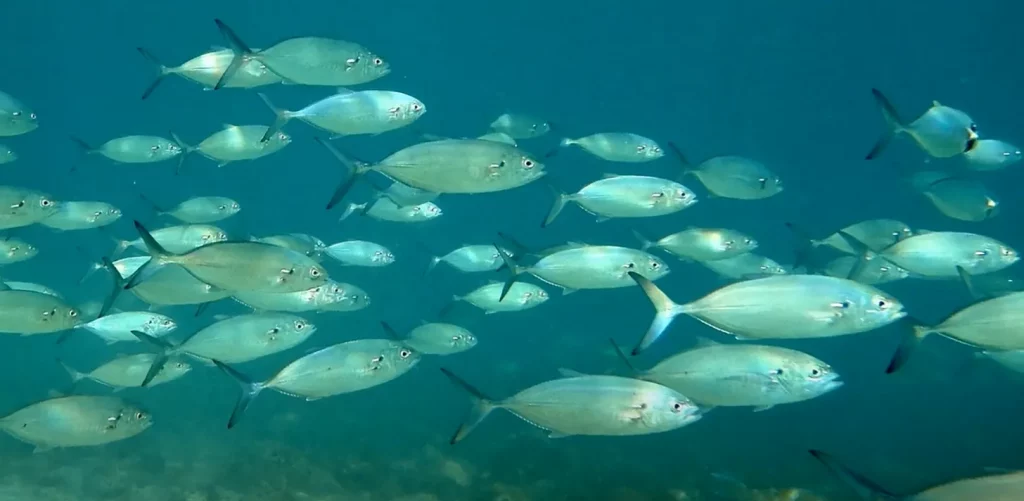a video short, titled: Imagine You’re a Baitfish from an “Interesting Underwater Perspective” playlist on William’s Observing the Baja Coral Reef Fish Youtube channel, which provides fish identification resources for our precious, but struggling coral reefs, and reef fish communities in La Ventana Bay. Check out the video documenting the largest Sardine run along El Sargento beaches in 25 years, or learn about two amazing 8 ft. Oarfish that were rescued, and get to know a Male Hogfish photographed over 30-months period, or learn to spot extremely poisonous Stonefish, or Stingrays buried in the sand. Visit the channel to learn about the amazing diversity of marine life that resides in beautiful La Ventana Bay. Contact William for more information at desertplayer@hotmail.com
La Ventana Stories
Lower California Rattlesnake
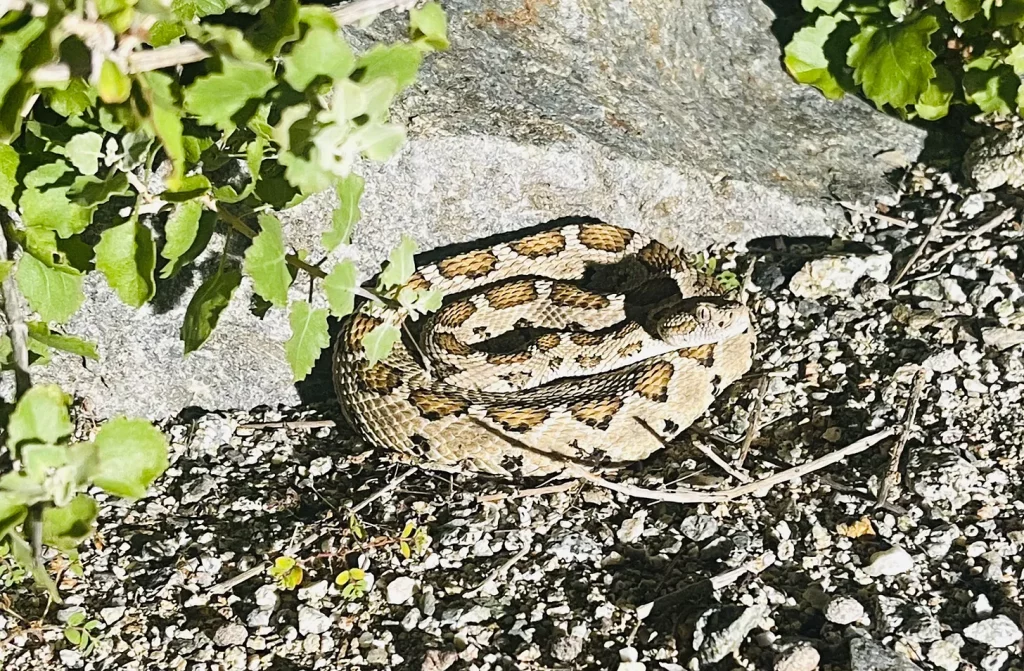
This week, I will be covering the Cape Region’s third and final rattlesnake: the beautiful Lower California Rattlesnake (Crotalus enyo).
I was fortunate enough to come across two on my recent trip to Cerralvo. These gorgeous little rattlers are ambush predators, and spend most of their time in wait of prey. In my experience, they are quite docile and will remain still to avoid detection before slithering off into the brush. They are not as large as other rattlesnakes in the area, and typically less common as well.
Interestingly, these rattlesnakes don’t just eat the typical array of rodents and lizards; they are also well known to eat centipedes! Rattlesnakes have quite a reputation and, although they are dangerous, I am personally much more worried about their venomous centipede prey!
Unfortunately, upon discovering rattlesnakes, a common reaction is for people to promptly kill them out of fear. Sometimes they are relocated, yet very rarely are they just left to just go about their business. Although relocating a snake is much better than the alternative, rattlesnakes are very important to the ecosystem, and we don’t really have many of them left in LV/ES proper anymore.
Here are a few reasons rattlesnakes are good neighbors:
- Pest control: rattlesnakes are especially successful at hunting rodents.
- Rattlesnakes keep to themselves; it is actually quite difficult to find rattlesnakes even where they are common.
- They sleep through the winter months; from December to March rattlesnakes are mostly underground.
- They won’t stop by uninvited or, if they do, you won’t have to worry about serving them beverages and small talk.
November Reptile Walks! Come join us to find reptiles! This Friday, November 3rd, and Sunday, November 12th, from 9-11am we will be hiking Punta Gorda in search of serpentine friends. It will be a fun, educational event, although we are not guaranteed to find anything. Meet at the Punta Gorda Trailhead on the far north end of town. chancestevens123@icloud.com
Neighbor to Neighbor
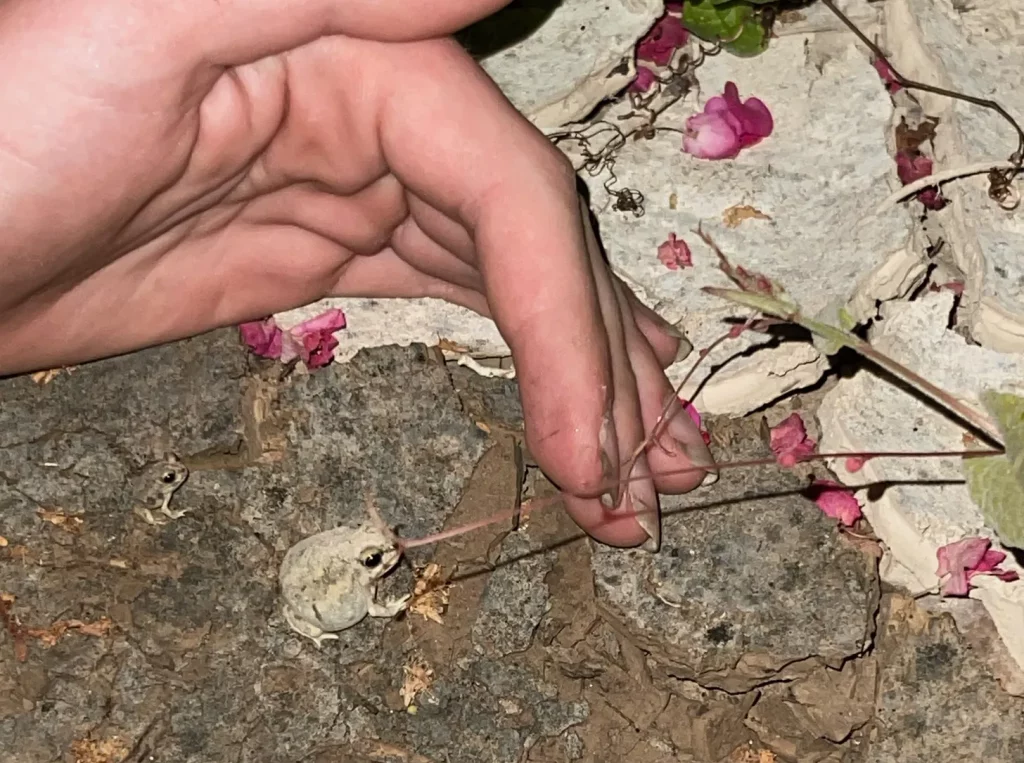
Dappled in patches throughout LV/ES we have some secretive friends who keep to themselves and act generally like good neighbors. These polite residents are the Couch’s Spadefoot Toads. They spend much of their time deep underground where they can find moisture, although they do come out on occasion to go on late evening strolls in search of insects.
These funny amphibians are surprisingly successful throughout dry deserts, living in regions that seem like the last place you would expect to see a frog. Once they reach adulthood, Couch’s Spadefoots can survive without rain for years! They do have one major drawback, however, that keeps them from being widespread across the area, and from being the world’s best neighbor: they are entirely dependent on standing water pools that last at least one week.
When the monsoon rains arrive, this is when the toads truly come alive! Studies have shown that the sounds and vibrations of heavy rain and thunder bring out the toads in force, and they meet at the all-important temporary ponds for massive toad blowout parties! After the rains, the sound of the toads’ calls can be almost deafening. I enjoy the toad orchestra, though it definitely lowers their score as neighbors.
Eggs are laid the first night after the rains and, in just 24 hours, tadpoles will hatch! Most impressively, in as little time as one week, the tadpoles will be fully metamorphosed into tiny toads.
The moral of this story is that toads rely on these temporary pools, so it is very important for us to make sure we don’t block off pools or waterways, and make sure the toads can reach them. The toads will live in our yards, and even in parking lots; all they ask is to get their annual party to ensure that there will be a next generation of 4-star neighbors.
If you have a seasonal pond on your property — or somewhere near you — please keep the toads in mind before you make a wall or berm, and they will thank you! Chance Stevens! chancestevens123@icloud.com
Overheated Coral
This summer 2023 water temperatures in La Ventana Bay have steadily remained above historical maximum levels. When coral is overheated, it expels photosynthesizing algae that produces food and energy so the coral can grow and remain healhty. Coral losing its algae then turns white. We are seeing a significant coral bleaching event happening still at the end of September 2023, and wont’ cease until temperatures drop below the coral bleaching threshold. William desertplayer@hotmail.com
Summer Stories
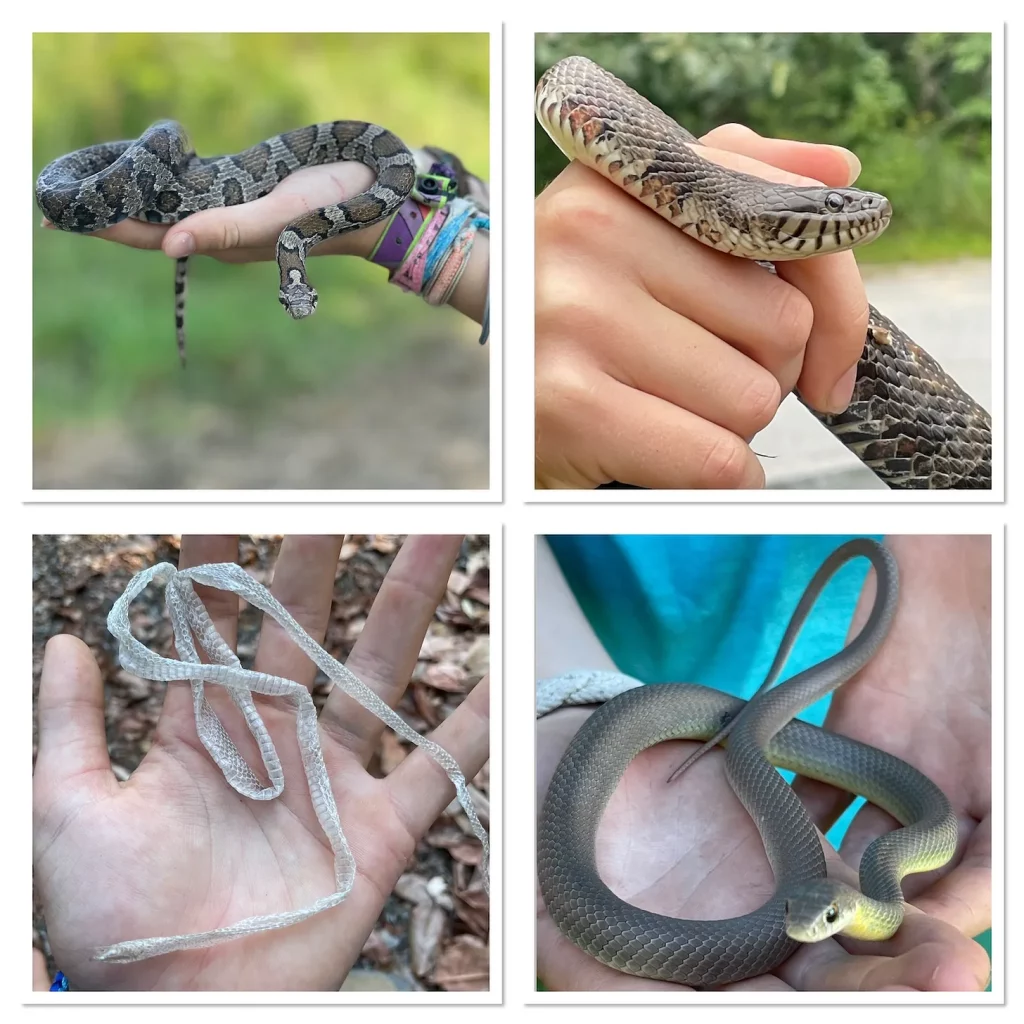
This summer I have had quite the leave of absence, and I am happy to announce that it is over! I have been traveling throughout the United States for the last three months (far too long) and am now finally ready to return to the sweltering desert that I missed so much. This week, I will tell of some of the more interesting events of my summer.
Around mid-June we left Baja for Central Oregon, where we would spend the first month or so. When we arrived, we were greeted by an arctic winter: roughly 60 degrees. It took some time to adjust, particularly because it insisted on going full-winter mode and snowed a few days later, coinciding perfectly with my first day counseling at an outdoor nature school.
Our travels then took us to New England, where I found some incredible creatures, such as my first milk snake and many large grumpy water snakes that had evidently not had their coffee yet.
We then cleverly traveled back across the country to Northern California to finish up some business at a Mexican Consulate and visit friends. Here we had an amazing time discovering an old barn filled with interesting creatures such as racers, gopher snakes, ring neck snakes, alligator lizards, skinks, garter snakes and even a shed from a rubber boa. Unfortunately, getting there involved a steep, long hike up a huge hill, but of course I climbed it as often as I could.
Finally, on the way back down to Baja, we stopped in San Diego to visit the San Diego Natural History Museum, which deserves a column of its own. – chancestevens123@icloud.com
Moon Jellyfish Report
Moon Jellyfish Report! They can be found in La Ventana Bay in the month of August. Luckily their stings aren’t said to be serious (much like a light case of nettles) and their tentacles are very short so you can swim around them easily to avoid being stung. On 8/12/23, I saw four Moon Jellyfish on my snorkel and snapped this photo. Word to the wise, don’t do what I did multiple times last August! I petted their bells, and then later rubbed my eyes. Apparently, the cells that slough off aren’t able to sting your thicker, hand skin,but they can sting your thin eyelid skin. Watch out for that!
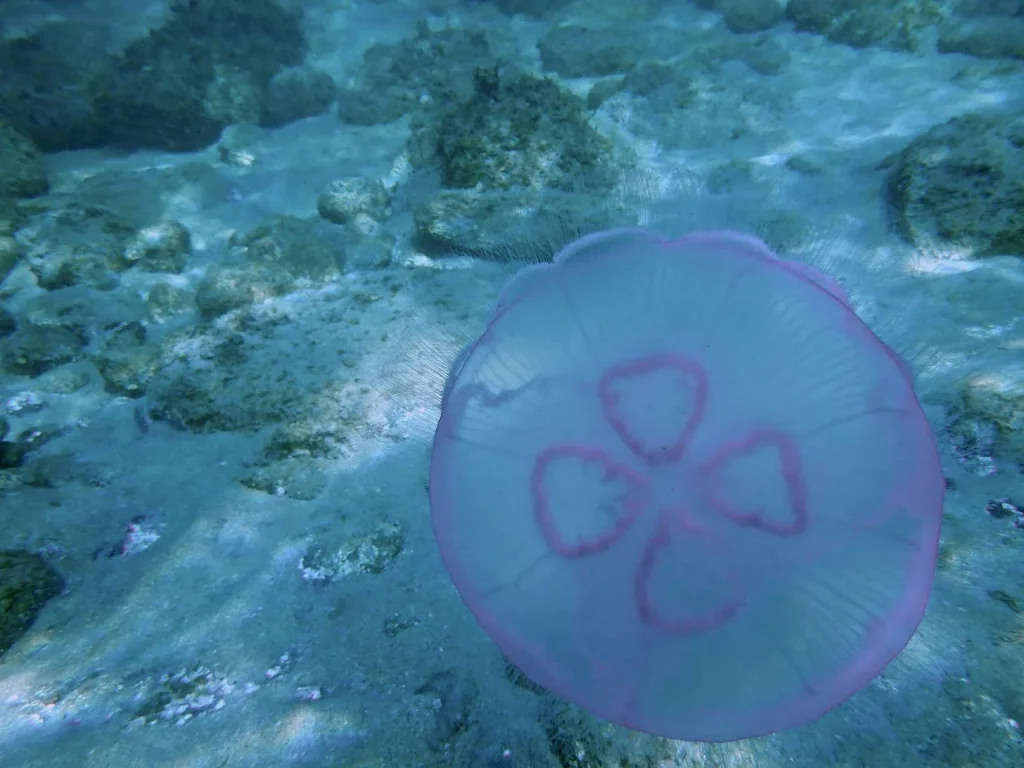
During the last week of July 2023, I swam with the same school of little Green Jacks on two different occasions. Usually, I will dive down, to try and photograph the school, but this time, I just floated, and approached them slowly, or waited for them to approach me. These smaller jacks tend to get much closer than the larger jacks. This was such fun watching them dart passed me, then start frenzy feeding. I thought I’d share this with you. Thanks. William desertplayer@hotmail.com
One Coral Reef Fish Species – A Quick Look
Here’s two new video shorts apart of my series, One Coral Reef Fish Species- A Quick Look. Thanks. William desertplayer@hotmail.com
White Spotted Boxfish: Here’s a fish that I have never seen swimming in a group. Usually, they are alone or with a breeding partner swimming and residing along or beneath the coral reef. Each remains in a territory that can be repeatedly visited.
Stonefish: Stonefish are fascinating creatures. What do I know about them? Not a lot. Their spines on their dorsal fins are very poisonous. They rely on using camouflage to hide from predators and prey. They sit without moving for long periods. When Stonefish want to move very short distances, they will use their lateral fins to walk along the bottom. You can see that in this footage
Sardine Runs
During spring/summer of 2021, one of the largest sardine runs in 25 yrs flowed along El Sargento beaches like a river. This was the most significant ecological event I have ever witnessed. Sardines, a food chain building block, transformed the bay into a series of feeding frenzies where marine species and sea birds were benefactors. I produced and initially released a short video in July 2021, called THE RETURN OF THE SARDINES, and then recently released a new one called 2021 A SARDINE RUN TO REMEMBER, using mostly unused footage of this epic return. Check out the videos, documenting much of the action that I witnessed. If you enjoy them, please consider taking time to share, like and subscribe. 1st time I have ever suggested that to viewers. Now, I sound like just another YouTuber! However, YouYube measures those to decide to bury or promote content. Thanks. William desertplayer@hotmail.com
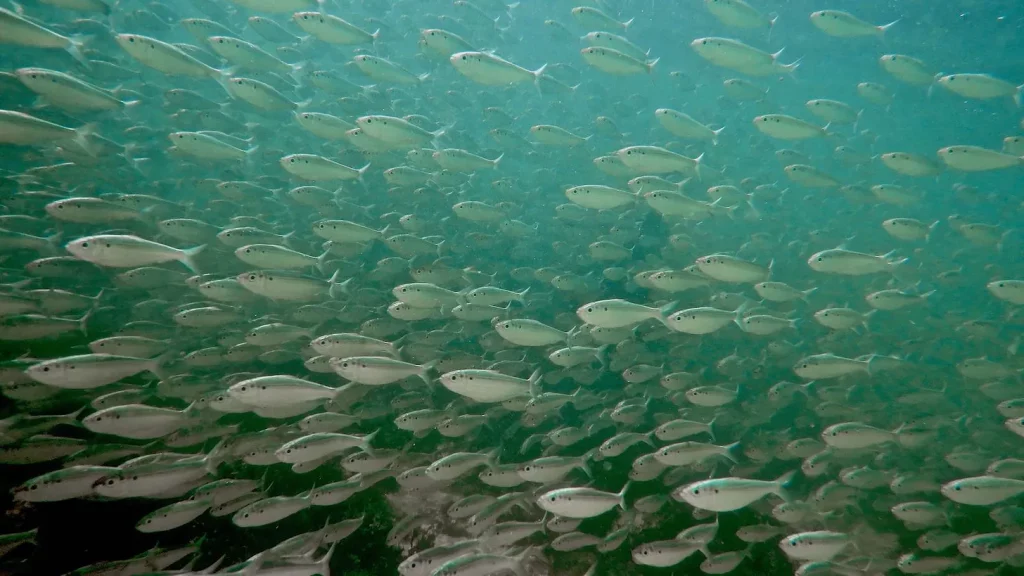
Desert Rosy Boa
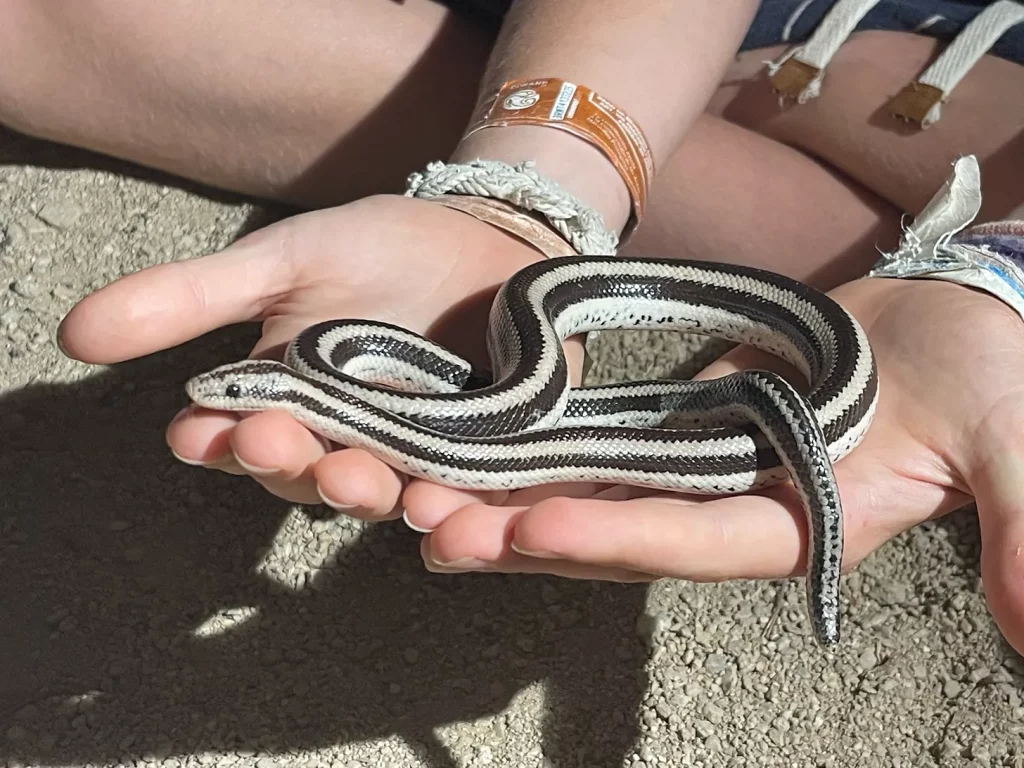
In the last few weeks, the weather has finally switched and, from now until October, the snake activity occurs chiefly after sunset. For weeks during the spring, I had been going on looking-for-reptile missions after dark many times — almost all complete flops — but recently my dad and I struck gold and found a Desert Rosy Boa (Lichanura trivirgata)!
In Southern Baja, rosy boas are beautiful snakes with cream and black stripes and cute faces. Well, at least that is my opinion. They are completely harmless, slow and relatively small, growing to about 91 centimeters (or 3 feet). These boas are usually nocturnal, although sometimes they will come out in the evening or occasionally in the day. Their diet consists mostly of small rodents, but they will eat small birds and reptiles once in a while. The snake we found was just exiting a hole in the road when we found it, and I believe they spend much of their time underground.
Rosy boas are some of the most laid-back snakes in North America, as they are slow, harmless and would never think of biting. We are very lucky to share our town with them and, if we do our part, hopefully we will be able to coexist with these amazing creatures far into the future. – chancestevens123@icloud.com
My Green Jack Friends
My Green Jack Friends: this video is a blue Giant Damselfish I visited every trip to this reef, hundreds of times over 5 years… his rock, well trimmed, I called Crewcut Rock. I visited this fish every time, I knew how to find that rock, it was distinct. The surrounding landmarks broke apart, but I could still find it. I can find it today… He partnered with a female about a year and a half ago, she is still there, feeding on this rock, living in the small coral over hang right past it. But he is gone. :(. Watch the video here. William desertplayer@hotmail.com
